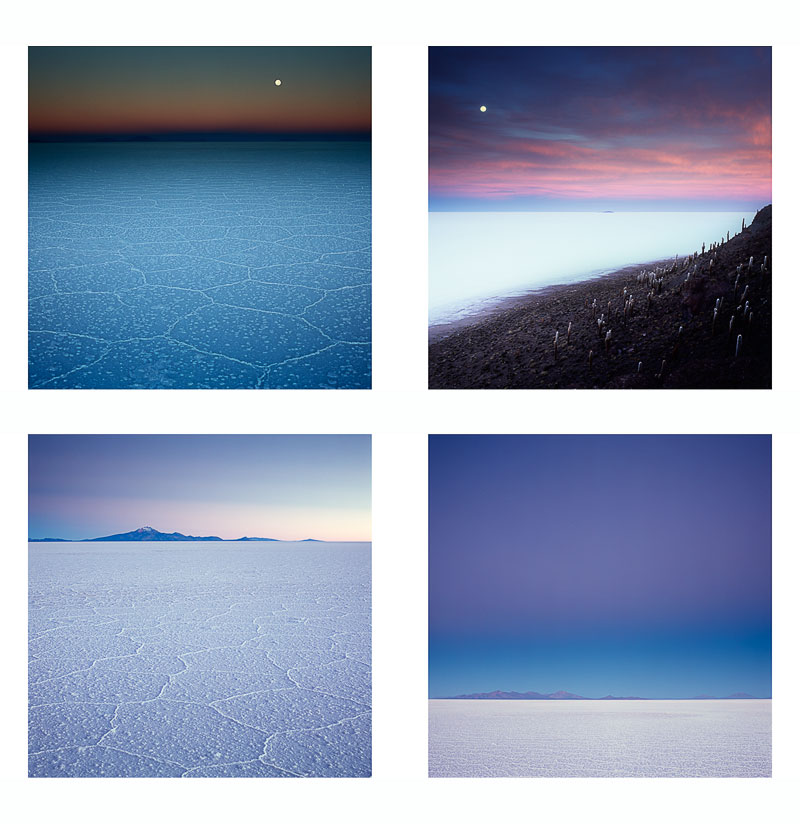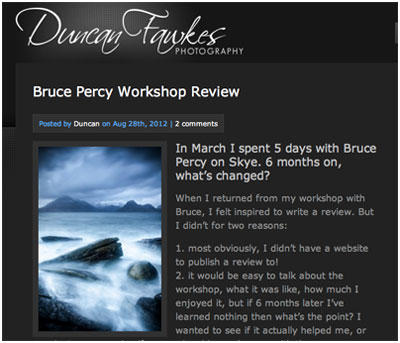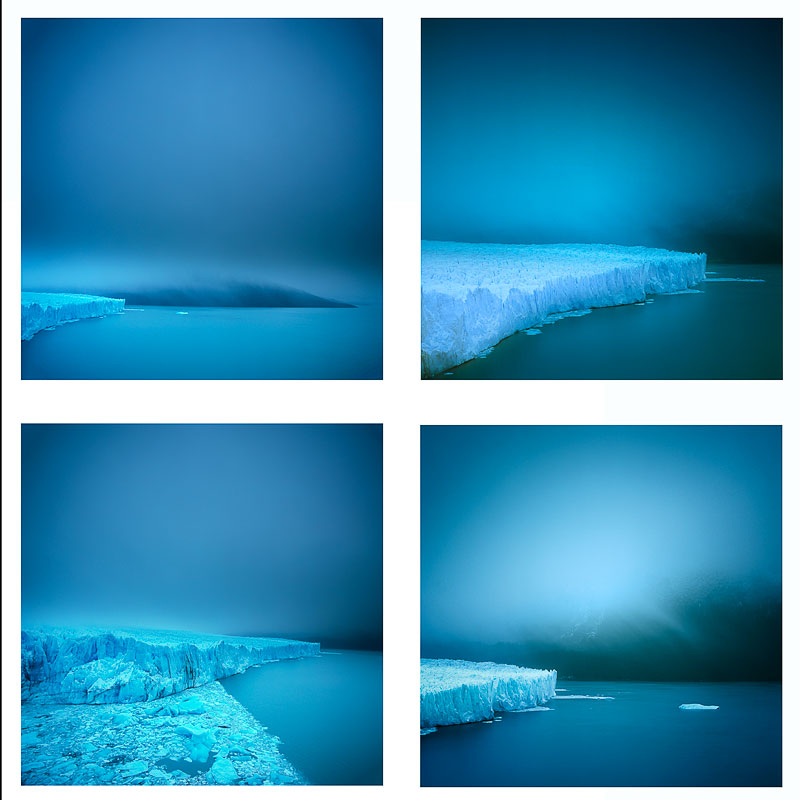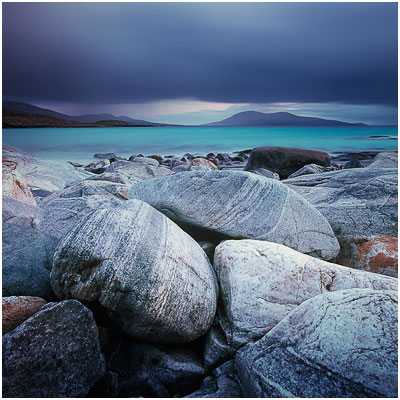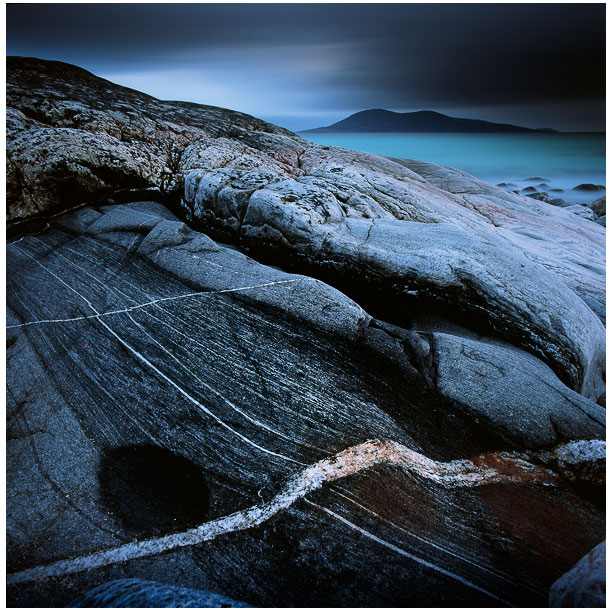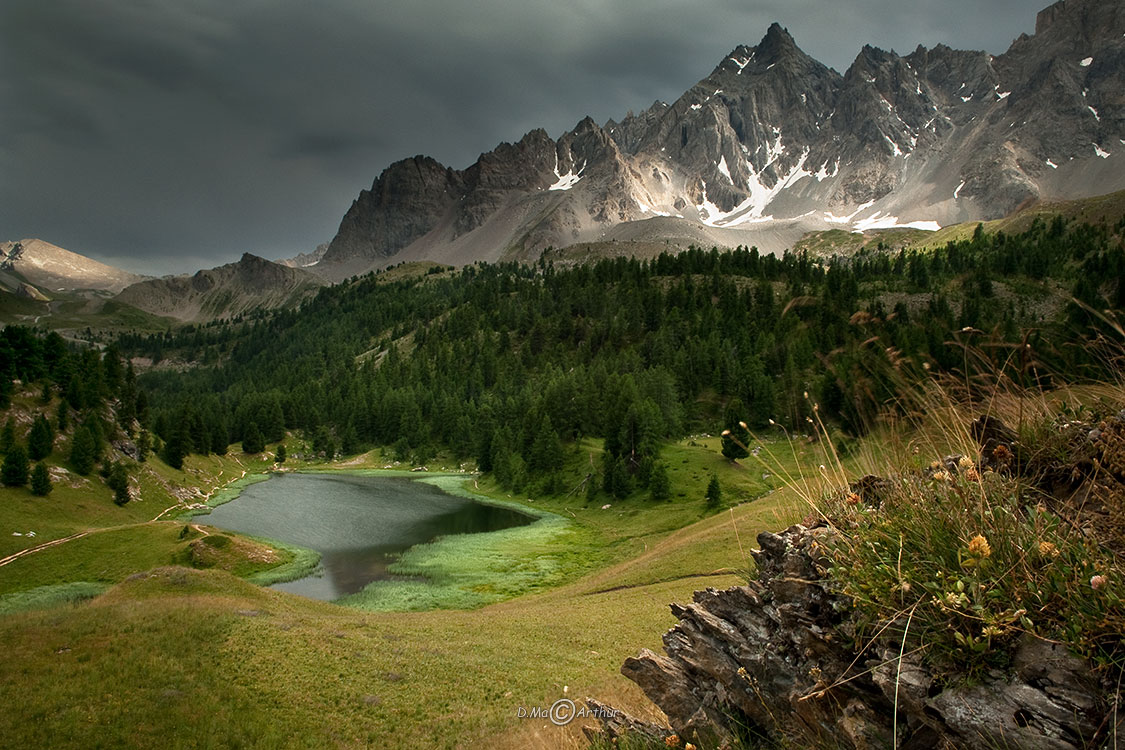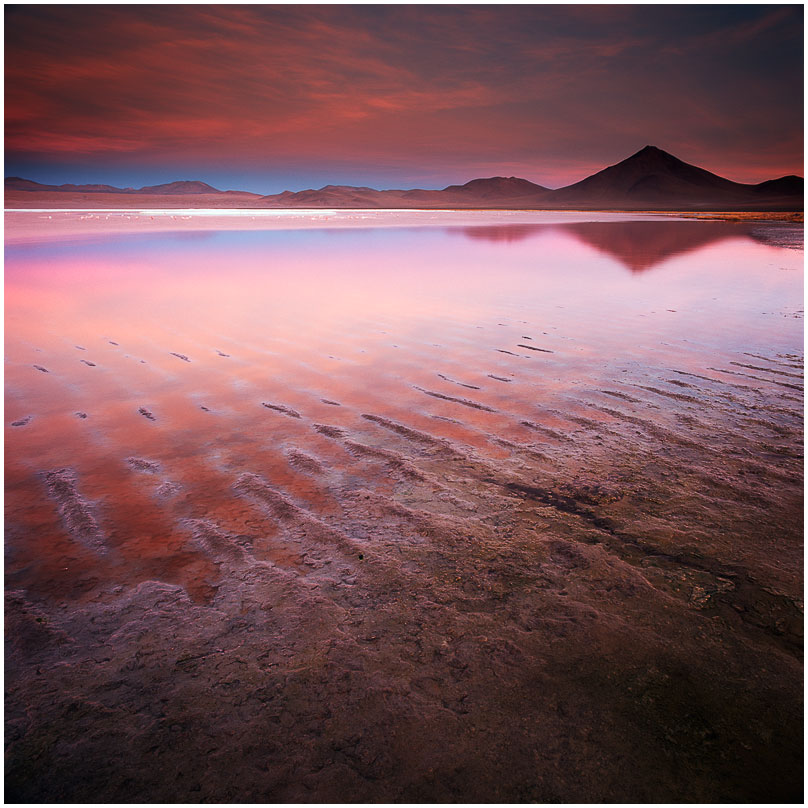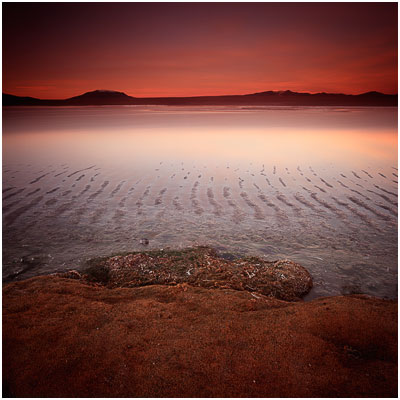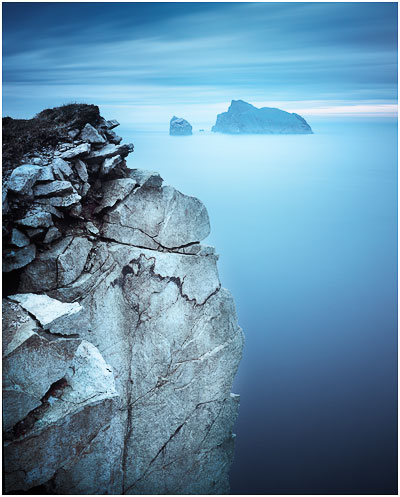One of the things I love about square aspect-ratio right now, is it's ability to help project the 'graphic' elements within the frame.
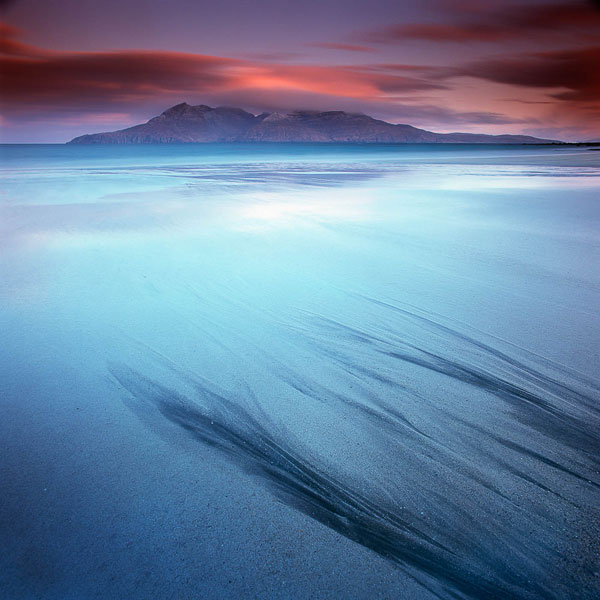
I found these dark sand lines - from a river outflow on Lagg bay on the Isle of Eigg during last April's workshop there. I was showing others how they act as a beautiful lead in, so long as we could distill it down to the most elegant sections of the 'fingers' - i.e, not have too much of them in. I felt I wanted to get closer, but as you'll see if you look at the final image in this post - that didn't quite happen when I tried the same shot with the Hasselblad 40 mm lens. So I think this 50mm version works the best.
But this image is really about reading from right to left I feel. Let's now look at an image shot from up on Pescado island, on the Bolivian Altiplano Salar de Uyuni....
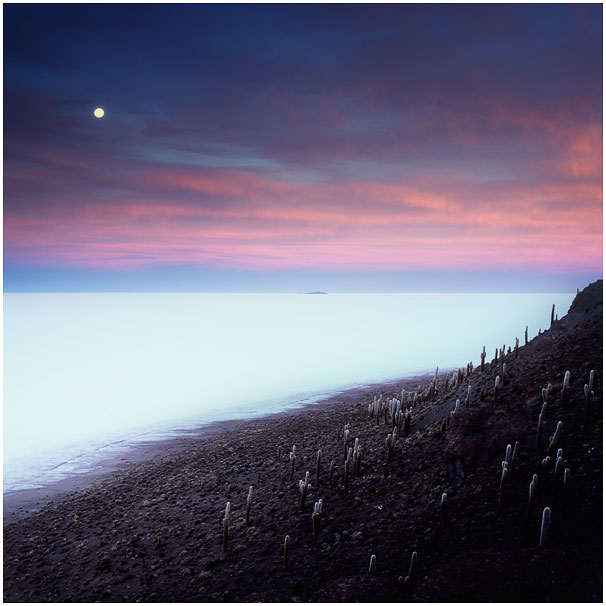
My eye walks into the frame from the bottom left and then up to the mid far right. Your eye may walk the scene differently, as I've discovered during my workshops that everyone has a different way of interpreting images.
While we were on Pescado island, I was really drawn to the colour of the sky, and it's so hard to get a nice shot of the cactus, when Jezz, on the trip pointed to what was happening behind us, I could sense that I should use the curve in the foreground to lead up into the frame. It was also a great opportunity to show the cactus on Pescado island too (so that made me very happy).
And returning back to Eigg, I loved the arc in the sky - that red cloud banding across the landscape like a vignette, it helps keep my eye inside the frame. I feel a flow between the cloud and the dark sand bars in the foreground, each guiding my eye back towards the horizon, while the isle of Rum sits nestled in between the space between cloud and sand pattern.
I often see my compositions like that. There has to be a sense of flow to the objects and the tonal relationships as they work together, hopefully to produce a nice image or two.


